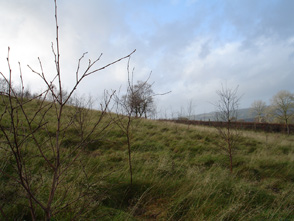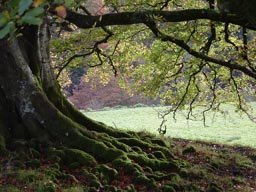Hearts of oak?

I’ve just finished Colin Tudge’s remarkable book ‘The secret life of trees’.
He postulates a world that uses biological methods (timber) to create the majority of the materials we need in our day to day lives, instead of the current energy-hungry processes like smelting steel, making cement and fabricating plastics. Just think how much CO2 a city built of wood might fix!
The U.K’s record in planting for timber is miserable. Since the last war, the forestry commission has planted huge areas of non-native sitka spruce, to the detriment of flora and fauna. The head of the FC claims that they have ‘increased the U.K’s forest cover to 10%.’
A thousand years ago, The U.K was covered in forest.
When will The Forestry Commission wake up and begin a massive planting program of native trees?
Below is a stinging response to the chairmen of the Forestry Commission’s letter published in ‘the independent’ recently-
Sir: Tim Rollinson (Letters, 30 January) claims the Forestry Commission has been growing trees for timber for 100 years, and implies that the FC forests are a source of useful building timber. This has never been the FC's remit.
The original aim was softwood for pit-props and paper pulp. After the shortages of the First World War, it was decided to make a "strategic reserve" of such timber, for these uses (coal and propaganda). After the Second World War, this need receded. A new rationale for coniferisation was invented, the economic appraisal, an excellent example of total economics gobbledegook. Basically, only huge state subsidy would induce private landowners to coniferise.
Later, other rationales emerged, employment and recreational benefits, wildlife benefits; and recently even red squirrel conversation. The FC gave forestation an absolutely terrible image. So now the head of the FC states that the FC forests can be used for building (zero carbon) housing.
These conifer species grow excessively quickly in the (ever warmer) UK climate - great for pit-props and paper pulp, but absolutely useless for building. The FC should drop, or be made to drop, this obsessive conifer programme and plant with native trees now, ideally in naturalistic planting patterns, rather than cramming them 6ft apart in rows.
There is also an increasingly urgent need to replant the deforested and extensively sheep- and deer-grazed uplands of the UK. How can we preach to Brazil about deforestation, when we have this blindness to the destruction of our own native wildwood forests, for wool and money?
JIM BOMFORD
PENTRAETH, CYMRU






